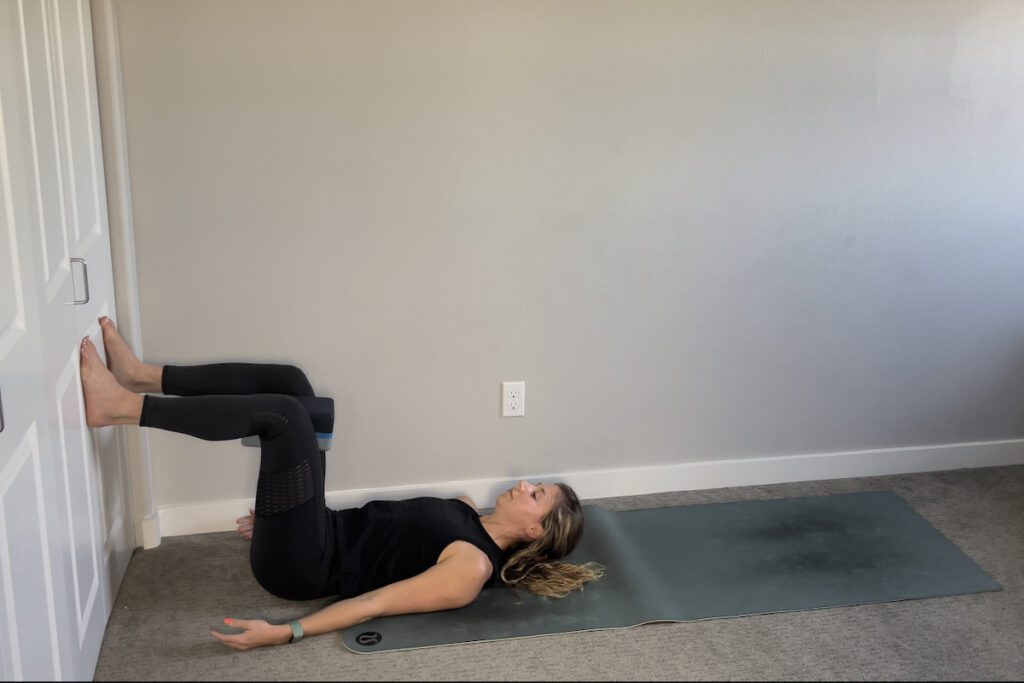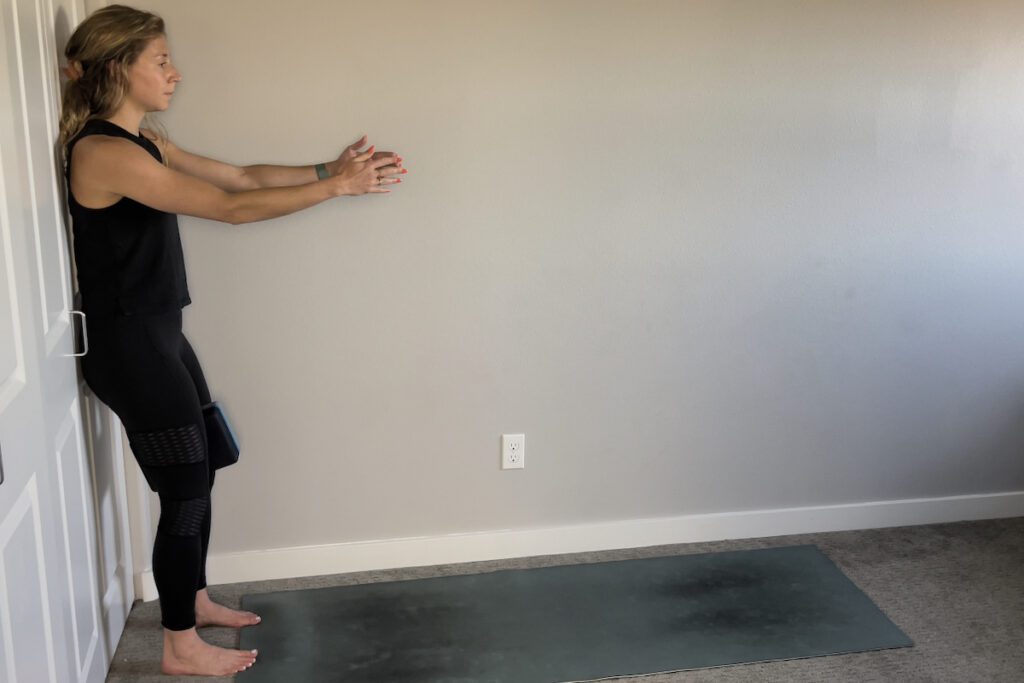Why Breathing Drills Should Be Part of Your Gym Warm-Up
When I arrive at the gym, the first thing I do is lie down on the floor.
Counter-intuitive? Maybe. Exactly what I need? No doubt.
I’m not just lying down on the floor. I’m practicing dedicated and focused positional breathing drills, and I’ve been incorporating this kind of breathwork into my warm-up and cooldown for over a year. It’s been the most instrumental change I’ve made to my workouts for a few big reasons.
I’m going to share all these reasons with you — but if you need one thing to convince you to establish a breathing practice without even listening to the “why” behind it all, remember this:
All day, every day, we’re inhaling and exhaling. Muscles like our diaphragm, intercostals, scalenes, abdominals, and many more are responsible for making this process happen in our body. If those muscles aren’t expanding and contracting and loading and de-loading properly, to the correct extent, or we’re standing and moving in poor alignment, compensations will start to occur. (Our bodies are great at developing strategies to help us achieve our goals — something we can be super grateful for! Also, something to keep in mind.)
And if we’re compensating when we’re breathing, that means we’re compensating every time we inhale and exhale, around 20,000 times per day. It makes the case to spend just a little bit of gym time focusing on regaining alignment and effective use of our core through breath, don’t you think?
Take a deep breath with me if you agree, and let’s talk about the basic drills I use in the gym to focus on breath and core connection and some of the benefits I’ve seen from increasing breathwork in the gym.
The basic drills
90/90 breathing at the wall

How to set it up:
- Lie on your back with your feet flat on the wall, with your knees in a 90-degree bend and a yoga block or small exercise ball between your legs above your knees.
- Keep your head on the ground (if you can’t lie flat on your back in this position, roll up a towel to support your neck).
- Take a deep breath in and feel your back gently press more into the ground.
- Exhale and squeeze the block, feel your lower abs come on without clenching your glutes, and feel your rib cage gently weave together and back.
- Now keep some tension in your lower abs (without bearing down on your pelvic floor) and inhale again. Notice if it’s hard to get a good breath in! That’s where you’ve got room to work. Keep working to move breath into your back, the sides of your ribs, and finally, your chest.
- Every time you exhale, feel your abs turn on more, and try to keep your chest from collapsing.
- A few key points to remember: Focus on getting 360-degree expansion in your rib cage as you inhale (feel the breath travel down, back, and side just as much as forward and up), focus on connecting to your lower transverse abdominal muscles — the muscles lower than your belly button — first as you exhale, and relax your neck and jaw muscles throughout.
Quadruped breathing with feet on wall

How to set it up:
- Find a tabletop position, hands under shoulders and knees under wrists, with your feet against some wall space behind you and a block between your knees for added core connection.
- The breath cues are similar to the 90/90 position, but now that your back isn’t on the ground you have less reference (which will make it harder to keep length in your spine the entire time).
- Remember! This isn’t cat/cow. Your spine isn’t moving into flexion and extension. You should feel this primarily in your abdominals.
Wall breathing from standing

How to set it up:
- Lean back against the wall with your feet about 6-8 inches away from the wall (adjust as needed). Feel your spine along the wall, and squeeze a block between your thighs for more core connection. Keep a slight bend of your knees
- You can reach your arms forward, up, or keep them down, whatever helps you bring awareness to what you want to focus on.
- The breath cues are very similar to the other two postures. This is primarily an abdominal exercise, and when you do this from standing you can feel where you tend to want to put the weight in your feet. This is the closest position to how you might find yourself when you’re standing in daily life (more on that later!).
What these breathing drills have done for me
Because I added dedicated, positional breathing exercises to my warm-ups, I cut my warm-up time down by many minutes, and I feel more prepared for exercise.
Exercises like the above are primarily abdominal exercises (I’m a firm believer that the best core work you can do is proper, isolated, focused breathing exercises!) — and when done slowly enough with intention, I’m breaking a sweat within 10 breaths.
Not only do breathing drills increase your core demand, but movements like this also do so in an optimal way. Focusing on getting 360-degree expansion in your rib cage, connecting to your transverse abdominal muscles, and relaxing the neck and jaw are all beneficial to practice in the warm-up so your body is more prepared to move with that same focus and awareness during the workout.
More awareness equals less chance for compensation, which equals more sustainable for your body and better workouts over the long haul.
Focused breathing can also help you improve your posture outside of your workout.
If you have poor form in a deadlift, you might feel your low back supporting you instead of your glutes and hamstrings.
When we have poor posture (not if, when, because it’s bound to happen from time to time!) the effects can compound over time.

The posture in the photo above shows a pelvis that’s very far forward of the rib cage, which sets the diaphragm up to ascend and descend in a compromised way (a post for another day, but this will lead to a whole mess of potential problems for our pelvic floor and the way we manage pressure in and out of our workouts).
But taking just a little bit of time at the gym to practice breathing with sensory awareness of the floor or wall space for reference can help us build “muscle memory” so to speak and help us feel when we’re out of alignment while we’re doing things like typing on a computer or hanging over our phones when we’re not thinking.
Intentional breathing helps you access more potential from your core and overall total body strength.
We already talked about how breathing is core work. I’ve effectively stopped doing any other kind of core work unless I’m taking a group class. That’s right, drills like the photos above and a few others have become my core work.
Breath, posture, and core all go hand in hand. We can’t talk about one without talking about another. The breathing drills have improved my posture, and my improved posture helps me breathe more efficiently. Better posture promotes more efficient movement overall and teaches the body how strong it can be when all the right muscles are coming to the party.
Although we might not realize at the moment when our bodies are gripping to hold on, work against gravity, and answer to all of the demands we place on them, when we teach our bodies how to find the right amount and right kind of effort through better positioning, something pretty incredible happens. I’m actually finally learning how to relax. When the muscles don’t have to work all the time, they can let go, fully relax, and ultimately get stronger over time.
Finally, intentional breathing has helped me feel more connected and better overall, during and after my workout hour.
When I put all these ideas together, it ultimately lands me here. I feel better during and after my workouts and I feel more excited to begin a new one again.
Starting my workouts the same way — by lying on the floor and breathing — is like taking a deep exhale (literally!). It’s so calming for my nervous system. Nasal breathing is known to have some pretty incredible impacts on our overall health; according to many studies like this one, it “promotes activity of the parasympathetic nervous system, which calms and relaxes the body, slows the breathing and the heart, promotes digestion,” just to name a few benefits.
And beyond all of the science, they simply feel good to do. Which is honestly enough for me. This is what I’ve seen in my own practice and heard from my clients. I can tell you with certainty you won’t be sorry you tried out these breathing drills — they just feel good to do — and the longer you stick with them, the more you’ll learn about your own body’s unique needs to gain more from them every time you drop to the floor.












